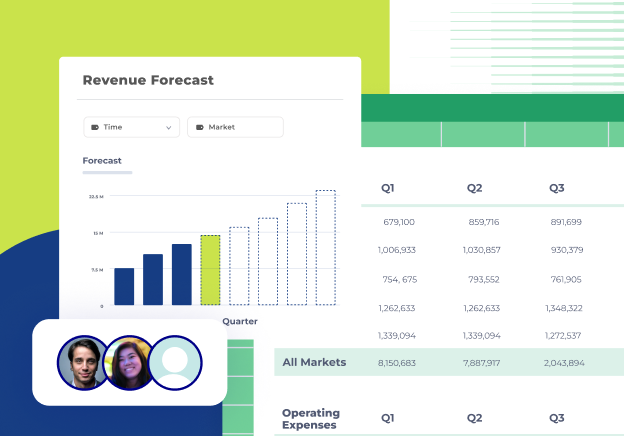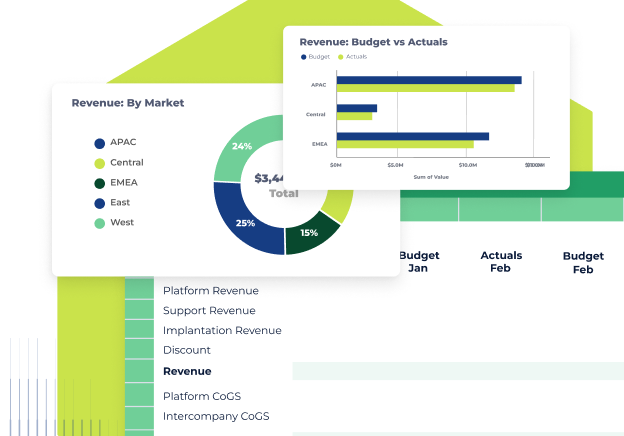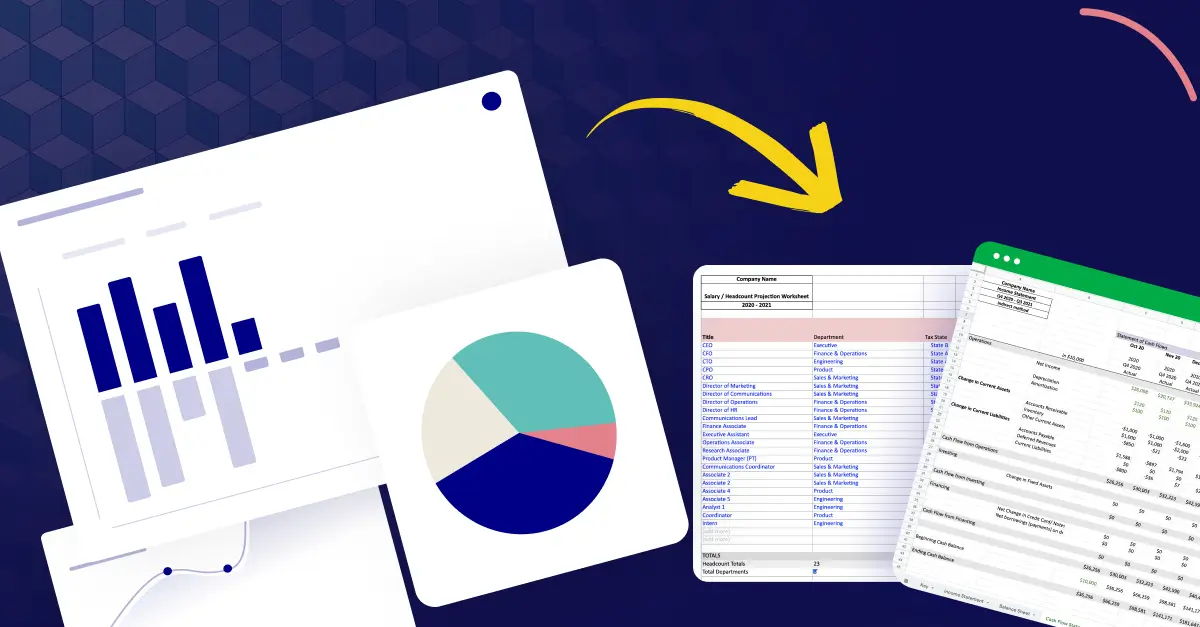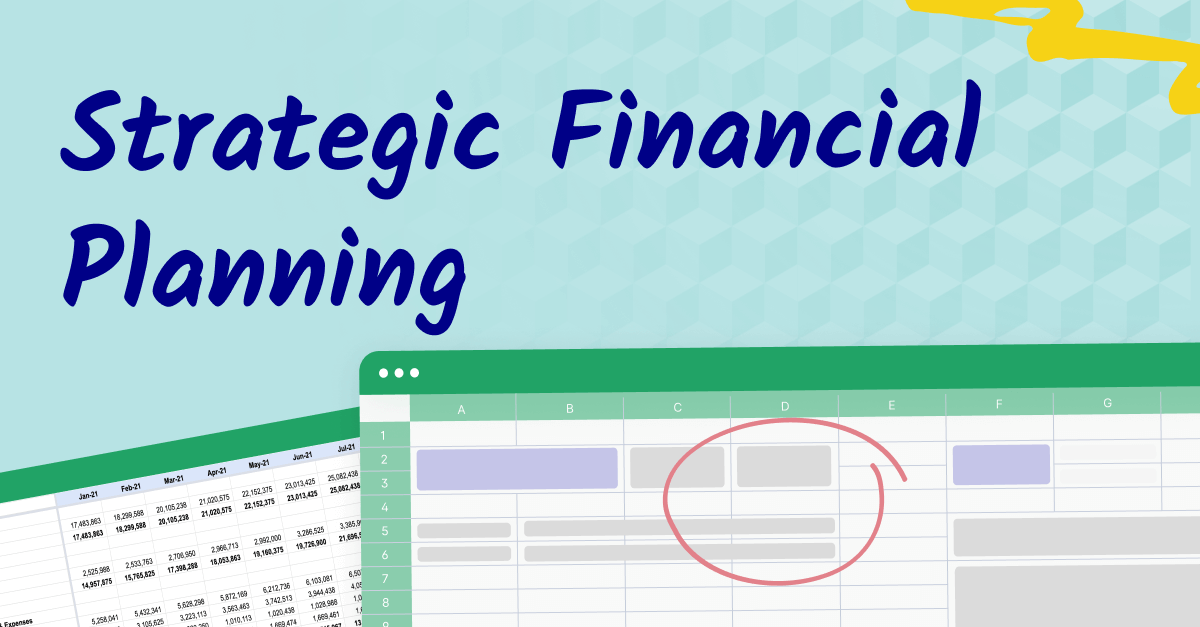What is a strategic plan?
A strategic plan is a structured roadmap that outlines where an organization is headed and how it plans to get there. It connects long-term goals with daily operations, helping teams stay focused on what matters most. When done well, it ensures that resources are allocated efficiently and everyone is working toward shared objectives.
Long-term financial planning is a cornerstone of any strong strategic plan, especially for those aiming to lead at the executive level. It shows you’re not just managing the present but thinking ahead and preparing for what’s next. This forward-looking approach helps organizations navigate growth, adapt to market shifts, and remain resilient during uncertainty.
An effective strategic plan requires clarity on the organization's goals and the ability to forecast future scenarios. It means identifying where growth opportunities exist, planning investments carefully, and staying ahead of market changes. Strategic planning isn’t just about reacting to the present—it’s about creating a clear path for the future and ensuring the organization is equipped to follow it.
Gain insight into your finance team’s plan with Cube’s Strategic Finance Assessment.
What is strategic planning?
Strategic financial planning is the process used to allocate resources, set goals, and identify risks and opportunities. Strategic planners look at the company's current environment—such as competitors, customers, and the industry—to map out how best to pull in resources, create value for stakeholders, and survive in a competitive marketplace.
Companies can create long-term plans that help them make decisions and structure operations through this process. Strategic planning helps companies stay ahead of competitors by foreseeing challenges or opportunities before they occur and setting sound business objectives to serve the company’s mission.
How is strategic planning different from operational planning?
The three spheres of financial planning and analysis (FP&A)—strategic, operational, and financial—all work together to provide a roadmap for the business. That said, they’re not interchangeable. Each type of planning covers a different aspect of the work and employs different tactics and skills.
-
Financial planning forecasts an organization's future finances, including income, expenses, and cash flow. It focuses on financial analysis of current and historical data to decide on long-term investments and strategic budgeting. It’s the bedrock of all other planning, detailing the resources used to conduct business activities.
- Operational planning focuses on short-term objectives for your current operations — setting budgets, creating schedules, and assigning tasks. It outlines the operational tactics the company will use to achieve the goals outlined in the strategic plan.
-
Strategic planning is a future-facing tactic. Strategic plans consider what the company’s long-term goals are and how to best achieve them by maximizing opportunities and minimizing risks.
Strategic planning looks at the bigger picture and considers how the company's external environment affects its goal attainment. It thinks in the long-term, with plans spanning one, five, or even 10 years out. While the strategic plan can change based on outside factors, those changes always occur in service ofthe company’s vision.
Who creates strategic plans?
Strategic plans are typically created by an organization’s leadership team, with input from various stakeholders across the company. This includes executives, department heads, and sometimes even external advisors or consultants. The chief financial officer (CFO), in particular, plays a crucial role in aligning the financial strategy with the company’s long-term goals, ensuring that the plan is both ambitious and realistic.
Creating a strategic plan isn’t a one-person job. It requires collaboration, and that starts with bringing together leaders from across the business. Each leader offers a unique perspective based on their role and responsibilities, which helps ensure that the plan reflects the full picture of the company’s operations and goals. This not only builds stronger alignment around priorities but also ensures that resources are used wisely and everyone is moving in the same direction.

Three benefits of strategic planning
Broad strategy is the framework on which all business activities are built. If you know what you need to do in a high-level, strategic sense, it’s easier to outline the actions that lead to those outcomes.
Here’s how strategic planning helps companies move their objectives forward:
Helps assess goals
Strategic planning helps a company analyze its position in the market and identify the best long-term goals to pursue. It allows companies to align their plans with current industry trends to stay ahead of the competition. Companies can make informed decisions when examining the financial impact of various tactics and strategies.
Strategic planning also gives leaders the tools to anticipate changes in the market and adjust their plans accordingly to ensure that they remain successful in the long run. This plays an integral role in creating more effective strategies.
Informs operational planning
Businesses use operational planning to ensure smooth and efficient daily operations. Team leaders set priorities, assign resources, manage staff, and monitor performance to ensure all tasks are completed according to the organization's goals and objectives.
Strategic planning creates a broader understanding of progress, from which teams can understand expectations, define roles and activities, and guide teams to optimize workflow resources.
Produces better long-term results
A clear strategic roadmap makes it more likely to achieve goals and create consistent growth. It enables agile decisions tailored to the specific needs and objectives of the company. With greater insight into how resources should be allocated, companies can identify growth areas and increase revenue without sacrificing long-term sustainability.
Ensures effective resource allocation
Strategic planning helps leaders make thoughtful decisions about how to direct valuable resources. Instead of spreading resources thin or focusing on the wrong priorities, a strategic plan ensures teams target their efforts in areas where they’ll make the biggest impact.
This process gives leadership clarity and confidence when choosing how to allocate budgets, staff, or time. Whether it’s funding a new technology initiative, expanding into a new market, or hiring key talent, strategic planning ensures resources align with the company’s most important goals.
Improves scenario planning
Strategic planning makes scenario planning more effective by helping companies prepare for risks and opportunities before they arise. By evaluating possible challenges like shifting market conditions or changing regulations, organizations can create contingency plans to address them head-on. At the same time, strategic planning helps identify growth opportunities, such as adopting new technology or responding to trends in customer behavior.
For finance leaders looking to step into VP or CFO roles, scenario planning is an essential skill. It shows you’re managing the present and thinking ahead to protect and grow the company’s financial health. Strong scenario planning requires digging into the details of financial risks and rewards and being ready for both the ups and downs.
This foresight builds flexibility into the organization. When the unexpected happens, companies with strong scenario planning can adapt quickly and move forward with confidence.
Supports a positive business culture
Strategic planning sets the tone for the culture of an organization. When everyone understands the company’s long-term goals and how their work contributes, the team experiences alignment and purpose. People can find it easier to stay motivated when they see how their efforts tie into a bigger picture.
A transparent plan also encourages collaboration. When departments and teams share the same vision, it reduces silos and improves communication. Employees feel more connected to the mission and more accountable for their contributions.
Involving employees in parts of the planning process adds even more value since people who feel included are more likely to take ownership of the results. Strategic planning doesn’t just guide the business—it creates a shared sense of direction and teamwork.
Start your planning off right with Cube’s Strategic Finance Assessment.
Essential parts of a strategic plan
Your unique business plan relies on data and input from many sources. The specific actions you take on that data determine your outcomes. Though individual, every planning process should feature some key strategic planning elements, including:
- Mission statement
- Company vision statement
- Company goals
- Strategy
- Tactics
Mission statement
A company mission statement describes the big picture of what your company aspires to. It’s used to guide decision-making, planning, and goal-setting. The best mission statements summarize your purpose in a quick, concise sentence telling others what to expect from your company. This frames your employees’ approach to work and unifies them behind the company cause.
Vision statement
Vision statements are clear, concise, and (ideally) inspiring declarations that outline your company's core values. They communicate why the organization exists and what it intends to achieve. A well-crafted strategic vision statement provides a sense of purpose and direction, motivating employees, stakeholders, and customers toward a common destiny. Vision statements are also a useful tool for establishing a strong company culture.
Company goals and objectives
If a business is on a journey, goals are the waypoints and destinations they try to reach. Organizational goals are the tangible outcomes of your mission, vision, and day-to-day efforts. They align with specific steps needed for success. Goals keep teams on track and ensure everyone works toward a common future for the organization. They provide clarity about priorities and direction to inform decision-making.
Strategies
Strategies are the “how” behind your goals. They outline the key approaches your organization will take to achieve its objectives. A strong strategy focuses on what the company does well while addressing external challenges. It connects the dots between where you are now and where you want to be.
Strategies help align teams by providing a clear framework. It’s not just about having a plan—it’s about having the right plan that guides your resources and actions effectively.
Action plan
An action plan turns high-level strategies into clear, actionable steps. It’s where big ideas turn into measurable progress. These plans define specific tasks, deadlines, and responsibilities. Everyone knows what needs to be done, who’s doing it, and when it’s due.
Action plans keep everything moving forward. They build accountability and make sure your team stays aligned with the company’s goals.
Resource allocation
Resource allocation ensures that the right resources are in the right place at the right time. It’s about using budgets, tools, and people wisely to support your strategy. Prioritization is key here. Decisions about where to allocate money, staff, and time need to focus on what will have the biggest impact.
Good resource allocation isn’t just about funding priorities—it’s about ensuring your organization is set up to reach its goals efficiently and sustainably.
Evaluation and control
Evaluation and control are how you stay on track with your plan. It’s about checking progress regularly and making adjustments when needed. This includes measuring results against key performance indicators (KPIs), reviewing progress, and refining the plan based on what’s working and what’s not.
It’s also a great way to build accountability. When everyone knows benchmarks and reviews are baked into the process, teams can stay focused and ensure decisions are informed by data.

Steps for a strategic planning process
Strategic planning isn’t a single exercise. The best strategies evolve to fit changing markets and customer preferences and include the following elements:
1. Assess your current strategic plan
Take a close look at your current strategic plan to understand where you stand. Are the goals you set still relevant? Have there been changes in the market or within the organization that require a shift in direction?
This review helps you identify gaps and opportunities. It’s also a chance to analyze your progress and see whether the strategies you’ve implemented are delivering the results you expected. Think of it as a checkpoint to ensure your plan stays aligned with the company’s overall vision and priorities.
2. Define your values
“What do you stand for?” It’s a simple question, but an important one. Your corporate values tell everyone the answer to that question. Whether your company operates on values like honesty and integrity, environmental protection, equal access to services, or maximizing customer returns, your values should be documented, communicated (through the mission statement), and integrated into all company actions.
When defining values, a company should consider what its stakeholders (employees, customers, business partners) value. This ensures company values align with those in its business environment.
3. Develop your mission and vision statements
Once you have a values framework, take time to define your mission statement and vision statement. These two key components aren’t just for marketing. They will serve as guideposts for your company and its decision-making.
- Your mission statement articulates your company values, purpose, and goals. It should be aspirational and inspiring, setting a high standard for the organization while providing direction.
- The vision statement guides the company’s decisions, such as what opportunities to pursue, what products and services to provide, and how to set key performance indicators.
Both statements must be clear, concise, and actionable—something your team members can easily remember and use as a reference in daily operations. Make these two identity statements a central part of your corporate communications.
4. Identify organizational goals
Now that you have a strong mission and vision to focus on, you can make goals that align with your strategic direction and drive measurable progress. Goals should be clear and focused, giving teams a sense of direction and purpose.
Break down your goals into short-term and long-term categories. Short-term goals might focus on immediate challenges, while long-term goals should reflect where you want the business to be in the future. Be specific—goals that are measurable and tied to a timeline are easier to track and adjust as needed.
5. Conduct a risk analysis
Risk analysis helps you identify potential risks and their effects on the organization. During this step, you consider the internal and external environment to highlight potential risks, estimate their likelihood, and how to handle them. You may also conduct a SWOT analysis (short for strengths, weaknesses, opportunities, and risks) to help inform your annual planning.
6. Examine your strategic options
Look at your mission and vision statements, risk analysis, and current resources. From there, consider opportunities that could help teams reach their goals. Analyzing the industry trends and internal customer data may give you context when deciding between competing strategies. Ask what has worked for other competitors in your space, and how you can take advantage of these to differentiate your products or services.
Solicit internal feedback from your managers, teams, or leadership on the conditions and considerations they see in daily operations. This well-rounded view of the business will bring your plans into sharper focus.
7. Outline specific tactics
Tactics are the individual methods used for enacting your strategic plan. Take, for instance, an email marketing campaign. This tactic involves sending multiple emails to prospective customers on an automated schedule. These emails could include educational content, promotions, and surveys to bring prospects further down the funnel.
Analyzing the data from these emails allows businesses to understand the effectiveness of their campaigns and adjust their strategies accordingly.
8. Build KPIs and metrics
Once you have strategies, key performance indicators (KPIs) and metrics help measure success. KPIs and metrics with clearly defined and measurable outcomes shed light on what’s working versus what can improve, plus highlight conditions or outcomes that are different from your expectations.
Committing to regular adjustments of your chosen metrics ensures your planning efforts achieve their desired outcomes.
Streamline financial analysis with Cube’s Financial KPIs Dashboard template.
9. Evaluate and revise your strategic plan
A strategic plan isn’t something you set and forget. It’s a living document that evolves as your business and environment change. Regularly evaluate your plan to see how well it’s performing. Are goals being met? Are tactics delivering results? Are external factors like market shifts affecting your progress? Use these reviews to adjust and refine the plan as needed.
By making evaluation and revision part of your process, you’ll maintain flexibility and keep your strategy aligned with both short-term needs and long-term objectives. It’s how you ensure your plan stays relevant and effective over time.
Drive innovation and profitability with Cube’s Strategic Finance Assessment.
Optimize each part of your strategic plan
A strategic mindset, data-driven decision-making, and continuous improvement are crucial for long-term business success. The fastest way to create more effective plans is to template your planning process, making it easier to adapt, iterate, and optimize over time.
That’s where Cube can help. Cube connects to your ERP and HRIS, integrates seamlessly with Excel and Google Sheets, and streamlines FP&A workflows so you can focus on strategic insights instead of manual processes.
Before you start the planning process, gauge where your finance team is at with Cube’s Strategic Finance Assessment.
Click the image below to request a free demo of Cube and see it in action.




.png)









.png)





![Best strategic planning software for CFOs [2025 review]](https://www.cubesoftware.com/hubfs/Strategic-Planning-Software%20%281%29.webp)
